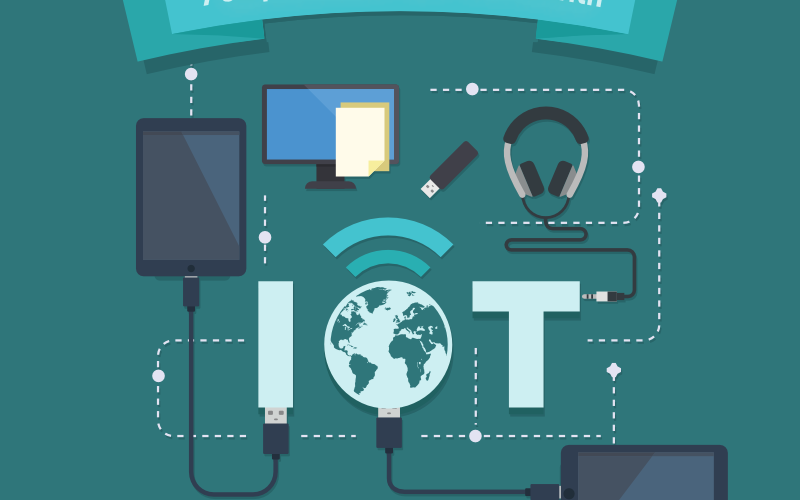Sensors are critical components in IoT systems as they enable the collection of data from the physical world. There are various types of sensors used in IoT applications, each designed to measure specific physical or environmental conditions. Here are some common sensor types and their applications in IoT:
- Temperature Sensors: Temperature sensors measure ambient or object temperature. They are widely used in applications such as HVAC (Heating, Ventilation, and Air Conditioning) systems, environmental monitoring, cold-chain logistics, and smart homes. Temperature data is essential for maintaining optimal conditions, detecting anomalies, and triggering automated actions.
- Humidity Sensors: Humidity sensors measure the amount of moisture or humidity in the air or soil. They find applications in weather stations, agriculture, HVAC systems, and indoor air quality monitoring. Humidity data is valuable for managing irrigation, controlling humidity levels, and preventing mold or moisture-related issues.
- Proximity Sensors: Proximity sensors detect the presence or absence of objects in close proximity. They are used in IoT applications such as occupancy detection, security systems, and automatic doors. Proximity sensors can trigger actions based on the proximity of objects, enabling automation and human-machine interaction.
- Motion Sensors: Motion sensors detect movement or changes in motion. They are commonly found in security systems, smart lighting, and occupancy detection. Motion sensors can activate alarms, trigger lighting, or initiate other actions based on detected motion, enhancing security and energy efficiency.
- Light Sensors: Light sensors measure the intensity or presence of light. They are used in applications such as smart lighting, energy management, and outdoor lighting control. Light sensors enable adaptive lighting systems that adjust brightness based on ambient light levels, leading to energy savings and improved user experience.
- Accelerometers: Accelerometers measure acceleration or changes in velocity. They are used in applications such as fitness trackers, wearables, asset tracking, and vibration monitoring. Accelerometers provide data on movement, orientation, and vibrations, enabling applications that track physical activity, detect falls, or monitor equipment health.
- GPS (Global Positioning System) Modules: GPS modules provide location information using signals from satellites. They are used in applications such as vehicle tracking, asset management, navigation systems, and geolocation-based services. GPS modules enable tracking and real-time positioning of assets and vehicles.
- Gas Sensors: Gas sensors detect the presence and concentration of various gases in the environment. They find applications in air quality monitoring, industrial safety, and smart cities. Gas sensors enable the detection of harmful gases, allowing for prompt action to mitigate risks or improve air quality.
- Pressure Sensors: Pressure sensors measure changes in pressure. They are used in applications such as industrial monitoring, weather stations, and healthcare devices. Pressure sensors provide data on atmospheric pressure, liquid pressure, or gas pressure, enabling applications that monitor conditions or control processes.
- Sound Sensors: Sound sensors (or microphones) detect and measure sound levels or sound frequencies. They find applications in noise monitoring, smart homes, and security systems. Sound sensors enable applications that detect sound patterns, analyze acoustic environments, or trigger alerts based on specific sound events.
- Motion Sensors:Application: Detecting movement and motion to trigger actions such as turning on lighting, activating security systems, or monitoring occupancy, Passive Infrared (PIR), Microwave, Ultrasonic.
These are just a few examples of sensor types used in IoT applications. The choice of sensors depends on the specific requirements of the application, environmental conditions, accuracy needs, and cost considerations. Combining multiple sensor types allows for comprehensive data collection, enabling advanced analytics, automation, and informed decision-making in IoT systems.
SHARE
